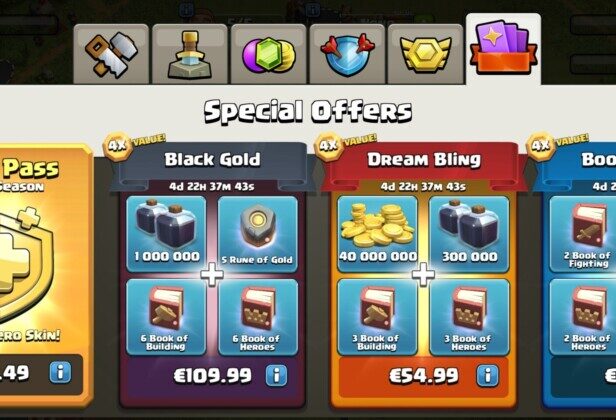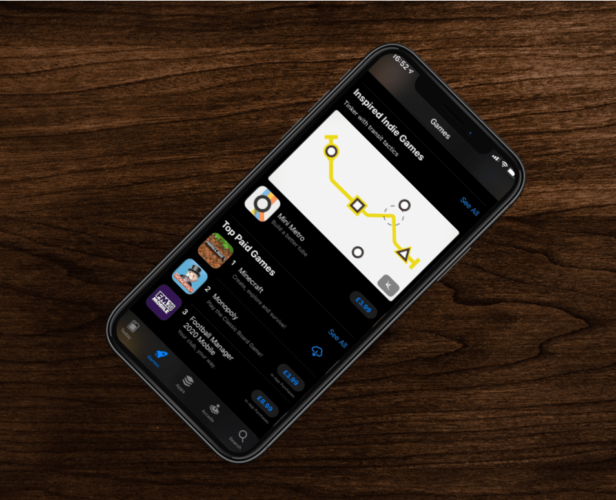Category
Strategies
#Marketing & Publishing
Words Matter – How to Write Compelling Copy to Sell Your Game
You might think that the most important part of being a game developer is, well, developing games. But you also need to be a writer. I’m not just talking about the words that appear in your game (although obviously those are really important) – you’ll also need to create copy for the app store description, patch updates, user interfaces… the list goes on. And the best publishers also have writing that supports their game. So that’s things like website content, press releases, and promotional material, for example, blogs and newsletters. The short version is that your writing is one of the best selling tools you have in your arsenal – eye-catching, well-written copy could be the difference between people downloading your game, or ignoring it and moving onto the next one. Don’t panic Before you run away shouting ‘But I’m...
#Ads & Monetization
Part 2: How to Land a Licensed IP for Your Mobile Game
If you had a chance to read part 1 of our licensed IP series, you should be pretty familiar with the basics when it comes to licensed IPs (if you’re not, we recommend navigating back to part 1 before reading on). With the fundamentals of IP law out of the way, we can start reaching out to IP holders. It’s actually pretty straightforward, though you should probably make sure you’ve got a lawyer to check over any contracts. So, what do you need to do first? Find the right fit Before you rush off and start hitting up every huge franchise for a chance to use their IP, you’ll want to make sure you’re the right fit. There are three questions to ask yourself: Do my mechanics work with this IP? If you’re making a racing game, will it really...
#Ads & Monetization
Part 1: The Pros and Cons of Using a licensed IP
There are a lot of reasons to use a licensed IP. You could have made a game and now want to reskin and update it to reach a new audience, like Reigns: Game of Thrones or the new Angry Birds: Star Wars. You might be making a music game and need the rights to use a few songs, like Guitar Hero. Or perhaps you just want to include a single character in your brawler, like Super Smash Bros. Whenever you’re using another creator’s content, you’ll need permission. A license. But what are the pros and cons of doing that? Does it really help? The short answer is: maybe. But it’s a lot of work. We can’t get into all the nitty-gritty here, but we can cover the basics and give you a few tips to make sure you don’t fall...
#Data & Analytics
Why Painted Door Tests are a Secret Weapon in Game Development
Have you ever launched a new feature that you were confident would succeed and be game-changing? Not only did your gut tell you it was a good idea, but you were able to back it up with user research? Then, when you finally launched, you found the new feature made very little difference. Perhaps users didn’t notice it, or they just didn’t care about it in actual game play. All the time, money, and resources you put into it could have been spent elsewhere. This has happened to me countless times, and it’s why we at Solitaired now take a data-driven approach towards understanding what new features we should work on. A $1M mistake I learned the hard way that both my instinct and consumer research could be wrong. Before getting into the gaming space, I had run an educational...
#Strategies
How to Find Player LTV Blind Spots and Earn More From Your Game
The ecosystem of mobile ads in gaming has evolved to a point where it’s possible to understand what actions players took, and from this, learn how to generate the most Lifetime Value (LTV). Yet most tools out there are fairly new and, like many studios, you may be missing out by simply not integrating these into your typical work processes. To help give you a head start into what’s changed and why it’s important, we put together this guide on the most common blind spots for player LTV, and how to identify and address them to grow your game’s revenue and profitability. Let’s get started. Use the LTV metric to know which platform is performing the best The same game can perform very differently on Android compared to iOS. Even more so when you look across regions. In China, the...
#Ads & Monetization
Designing battle passes in mobile games: the whats, whys, and hows
Battle passes have been around for a while now, but only recently so in mobile games. With the rise of battle royale games like Fortnite and PUBG, this new strategy is now proving to be a reliable source of revenue for mobile game developers alike. So, what makes a good battle pass? And should you add this to your monetization strategy? To answer this, I look at the best of the best, and see how top developers use this tactic in their games. But first, what are battle passes? Let’s first talk about what battle passes are. To put it simply, players purchase a plan, and usually get extra rewards, items, skins, and more (which aren’t normally available in the free version of the game, or even on the item store). These passes usually last a limited amount of time...
#ASO
7 ways to optimize your mobile game on the app stores
“One does not simply hit the top of the app stores” – Boromir, Lord of ASO. Seriously though. Getting your game noticed on the app stores is no easy feat. Just like websites have SEO (search engine optimization), app stores have ASO (app store optimization). So I thought it best to ask some of the industry experts. I took the time to talk to a bunch of different developers, some with games on the Google Play store, others with games on the Apple store. And some with games on both. Simply to see how they set up their game’s pages, what they felt was most important, and to discover their top tips when it comes to the Mobile Store Page. I’ve compiled them into a bunch of takeaways, but I’ve kept all of the quotes in so you can see...
#Data & Analytics
4 features to look out for when picking a consent management tool
Editor’s note: This article was written by Nandi Gurprasad, head of Strategic Partnerships at Ogury. As GDPR and Privacy is usually a tricky topic, we’ve asked them to dive into one of their recommended solutions: Ogury Choice Manager. GDPR and data-privacy isn’t exactly new. Unless you’re starting up a new business or company, you’ve most likely heard these terms and have a rough idea of what it’s about. But what a lot of people may not know is that GDPR isn’t a one time thing. The advice from Data Privacy Authorities (DPAs) is evolving, constantly. And a lot of smaller companies tend to set up their policy once and don’t think about it ever again. When in reality, compliance is an ever-evolving process that needs your attention. To give you an example, advice from the Data Protection Authorities is updating...
#Data & Analytics
5 A/B tests to run during your soft launch
As we released A/B testing last month, we thought we’d share a few tips, tricks and ideas on how to make the most of your experiments. So put on your lab coat, fire up the flux capacitor and let’s get to sciencing. If you’re new to A/B testing, it’s a pretty simple concept. Send three variations of your game out into the wild: A, B and a control group. One group of your users sees A, another sees B and the last sees no change at all (your control group). You pit them against each other and see which performs better. It’s survival of the fittest in action. But when should you start your A/B tests? And what exactly should you be testing? Your soft launch is the Goldilocks zone Before you can start testing, you need players. And the...
#Game Design
4 Key Steps to Making a Successful Hyper-Casual game
Hyper-casual games became the hottest trend in the industry when developer Voodoo saw an exponential increase in downloads, which made them the third best performing game developer worldwide in 2017. Only Google and Facebook performed better, and the message was made clear: hyper-casual games are in-demand and can be extremely successful. Since having sustained this popularity, hyper-casual games now generate between $2 billion and $2.5 billion in annual revenue. People across the globe are now spending more time than ever playing games, and perhaps more significantly, they’re also engaging with advertising more – a trend that has played to the strengths of hyper-casual’s unique monetization model. The first quarter of 2020 saw hypergrowth in the hyper-casual vertical, with global installs doubling from December 2019 to March 2020. Users weren’t only downloading more hyper-casual games, they were also playing them more...
#Data & Analytics
Early Testing Strategies to Maximize Your Hyper-Casual Game’s Potential
Editors note: This article was written by Vivian Dong, Senior Publishing Manager at JoyPac. This is based on their most recent webinar, which you can watch here. Testing is the most important part in the whole process of hyper-casual game development. When you have an exciting new game idea, you need to quickly answer the most fundamental questions: Will your idea be appealing enough to draw in players? When they download and play it, will they keep playing it? Will it make money? To answer these questions, you’ll need to start testing as early as possible. We recently hosted a webinar on early testing, along with Gabriel Stürmer, CEO at Clap Clap Games, and Kristina Truvaleva of Business Development & Global Partnerships at ZeptoLab. Here are ten lessons we took away from the webinar. Lesson 1: Test your idea’s marketability...
#Strategies
Time-Saving Tools For Mobile Game Developers
Editor’s note: This post was originally published in 2016. As it’s been a while since we’ve explored what the best tools are that you should be using, we thought we would go ahead and give this post a refresh. Let us know if you think we’ve missed anything important. How can you lower acquisition costs, improve engagement and drive more purchases? Where will you find the time? From basement to studio, game developers manage a growing remit of technical skills… yet the hours in a day stay fixed. For sure, there are thousands of time-saving apps and services that you can make use of – but figuring out which are best is tricky. That’s why we’ve curated a list of the top game development tools, as voted for by game developers, to help steer you in the right direction and free-up your time to...
#Ads & Monetization
Personalizing Offers for In-App Monetization – Lessons from Crazy Panda
At Crazy Panda we publish loads of different types of titles – like World Poker Club (the biggest poker game in the Commonwealth of Independent States), Stellar Age (a mid-core mobile MMO strategy game) and Household (a social networks-based farm game). These games might look pretty different, but they all have one thing in common – in-app purchases monetization, and personalized offers. In fact, at Crazy Panda, personalized offers are between 50% and 80% of our revenue, depending on the product. So we’ve spent a lot of time making sure we get these right. And we’d like to pass on a bit of what we’ve learned to you. We think you can use this for most, if not all, games with in-app monetization. Before we begin Let’s start by nailing down a few technical terms which you may or may...












